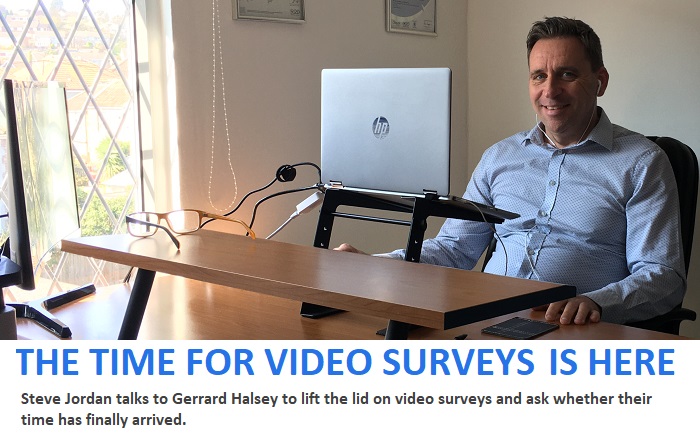Of course, video surveys have been here for a long time but, it seems, treated with some scepticism by many of the traditionalists in the moving industry. How can it be possible to get the cube right by looking through a screen, and how can you build a rapport with the client remotely?

Gerrard Halsey is a freelance video survey consultant for moving companies. He started his company in April 2019 and I spoke to him in the middle of March 2020, with the Coronavirus pandemic in full bloom and an uncertain path ahead for everyone. But for Gerrard, with moving staff on lockdown, business had surged as movers worked hard to meet the needs of their customers while they still had the opportunity to do so.
Gerrard has been involved in the moving business all his working life. His career started at Interconnex as an export packer in the 1990s which took him to Crown in 2001 working in residential sales, for whom he opened a new branch in Bristol, then to Australia for a time, then back to Crown to help the company implement video surveys. He then went on to tech companies, Crater and Buzzmove, to experience the technology side and to share his moving expertise. He has spent many happy hours on the road doing in-home surveys, and subsequently transferring those skills to a more technology-driven medium.
“When Crown asked me to implement video surveys for them, I was sceptical at first,” he said. “I wondered if it was just to strip cost out of the business. I wondered how I would get the volumes accurate and build a relationship with the customers. However, I decided I had the opportunity to spearhead something new right from the start, so I gave it a try.”
His diary quickly became full with video survey appointments, all for competitive work. “I did about 150 surveys and managed to secure 80% of all competitive opportunities at a really good margin,” Gerrard said. “This compared with about 60% with home surveys.”
Now I spent 20 years on the road myself, albeit in a different age, and I know that an 80% conversion rate is extraordinary (actually 60% is pretty good!). I wondered how it could be so much better than a survey conducted face-to-face.
“I could get to see the customer much more quickly,” said Gerrard. “I was able to conduct the survey and cost it and get it back to the customer within three hours of the enquiry coming in. Instead of waiting for days for a quotation, I was in first, surveying first and quoting first. I was following up and asking for the business before the competition had even responded.”
But how were the volumes? Surely getting the volume right was much more difficult? Gerrard said no. “The technology allows you to scan the whole room, record it and watch it over and over again if needs be. I can do the survey at my pace to make sure I get it right. I’m not under pressure by an unrealistic diary set up to ‘knock them out’. I also use techniques to control and lead, to get what I need from the client. In the home I always felt that I was having to work at the customer’s pace. This gives me much more time to get it right.” Gerrard also asks the customer to identify specifically the things that are not going, so if they appear in the final collection, they can be charged as extras. “There is never any dispute, they can't say they showed the surveyor everything.”
Of course, time has moved on a little since I interviewed Gerrard. We spoke again before going to press and he said that the industry had operationally slowed down, as would be expected. Nobody is moving anywhere right now, however there remains a golden opportunity for movers to continue servicing front end sales, while folk are stuck at home, by using his service. But when the lockdown lifts, as it surely will, people will start moving again. When they do, I suspect those who gave video surveys a try, out of necessity in the first instance, might get to like the idea and, if Gerrard’s experience is anything to go by, actually prefer it.
Necessity is the mother of invention apparently. So when the world emerges from the current crisis there will be a lot of things that were done out of need that will become ‘the new normal’ (I hate that phrase but …). I think home working will become universally acceptable for many, video conferencing will expand, business travelling will reduce, and probably video surveys will have come into their own, at last. It’s been said that the world will never quite be the same again … perhaps this is another example.
Photo: Gerrard Halsey